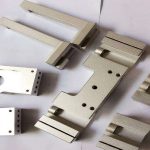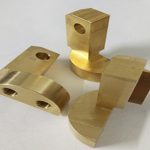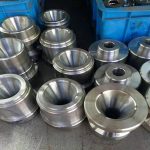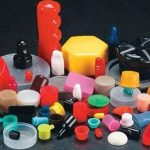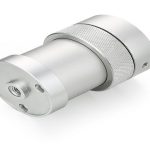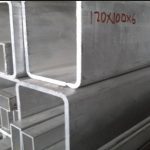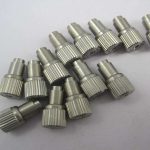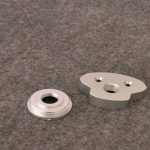In order to realize the green production of sealing stones, a new type of sol-gel polishing tool composed of gel balls was developed, and its processing performance and degradability were evaluated. Through different molding and drying methods, small-sized gel balls were obtained.
Through the investigation of the surface morphology and surface roughness of the sealing stone, the processing performance of the sol-gel polishing tool was studied. The degradability of the sol-gel polishing tool was analyzed by the surface morphology of the gel ball in different environments and Fourier transform infrared spectroscopy.
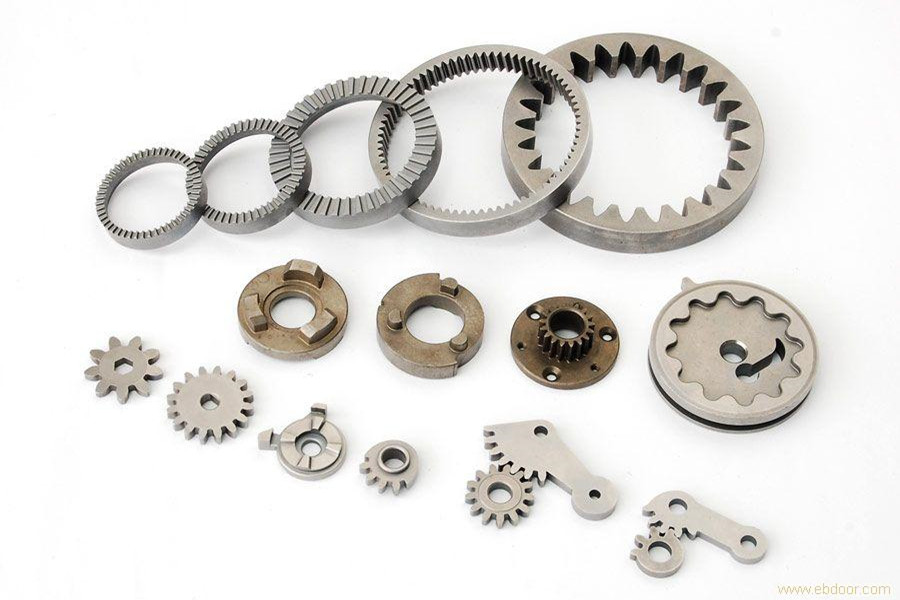
The results show that the selected method can successfully prepare gel spheres with a spherical shape of less than 3 mm2. The surface of the seal stone treated with the sol-gel polishing tool is smooth and smooth. The gel ball can be placed in a recycling tank together with water and bacteria for degradation, avoiding environmental pollution and recycling abrasive particles.
Research Background
Seal stone has a long history and profound cultural background. It is a kind of stone that is very suitable for making seals and craftsmanship. It has a warm texture, rich colors, strange patterns, and simple background. The main components of the enclosed stone are clay minerals, such as Deca stone, pyrophyllite, kaolinite, etc., with Mohs hardness of about 3.0, 1.5 and 2.5 respectively.
Therefore, due to the mineral composition of low hardness and high brittleness, sealing stone can be defined as a soft and brittle material with a Mohs hardness of about 2.5.
The main processing techniques of seal stone include carving and polishing. Stone carving is the process of selectively removing the original material to determine the basic size and shape of the stone.
The purpose of stone polishing is to remove the surface traces introduced by the engraving without changing or minimally changing the size and shape of the workpiece, so as to improve the surface gloss, thereby improving the surface quality of the workpiece. Due to the shortcomings of fragile and easy cracking of the sealing stone, the sealing stone needs to be processed under the conditions of water and suitable temperature, and the processing strength must be controlled well.
Therefore, the traditional processing method of sealing stone is manual processing, resulting in low production efficiency of sealing stone. However, the rapid growth in demand for seal stones and the insufficient production potential of seal stones have directly led to a serious imbalance in the supply and demand of seal stones.
At present, the automatic engraving machine used for seal cutting has been put into use, which can completely replace the manual engraving process and greatly improve the engraving efficiency. The engraved semi-finished products need to be polished to meet the quality requirements of the seal stone process due to the processing traces and the defects of the stone itself. The stamp stone polishing methods at this stage mainly include manual polishing equipped with basic tools and manual polishing equipped with machines.
However, a large amount of dust, sewage and noise will be generated during the processing, which poses a potential threat to the environment and the health of operators. Therefore, there is an urgent need for an automatic polishing method to liberate labor, so as to completely use machines instead of labor to realize the entire process of sealing stone processing.
The main reason why the sealing stone is difficult to realize automatic polishing is that there are a lot of irregular surfaces on the sealing stone. The processing methods of irregular surfaces mainly include vibration polishing, fluid polishing, airbag polishing, energy polishing, and robot polishing. For the precision processing of sealing stones, vibration polishing may be one of the most suitable methods due to its low cost and moderate equipment price.
Vibration polishing is currently the main method of polishing jade and pearls. The processing principle of vibration polishing is to achieve a good polishing effect through the friction between the workpiece, the abrasive block and the medium. Traditional high-hardness abrasive blocks are mainly made of alumina powder and clay sintered. However, in the process of using traditional abrasive blocks, a large number of scratches and damages will occur on the surface of the stone. The fundamental reason for the above phenomenon is that the hardness of the traditional abrasive block is much higher than that of the sealing stone.
Based on the principle of sol-gel, a new type of polishing tool for polishing irregular samples is developed in this paper, which mainly includes mixing, forming and drying.
By this cutting method, a polyhedral gel tool with a small size and a uniform size can be obtained. However, due to the external curing principle of sodium alginate, the internal and external mechanical strength of the gel is inconsistent, resulting in uneven mechanical strength of the polyhedral gel tool. The drop method is used to effectively obtain gel spheres with uniform particle size, and their mechanical strength is basically the same. When the gel tool is prepared by the crushing method, a crushed gel sample with a smaller particle size is obtained, but the mechanical strength and elasticity of the crushed gel sample are greatly reduced.
The results show that the water content of the gel ball is 0% after it is completely dried, and the volume of the gel ball shrinks seriously. Although the mechanical strength of the completely dried gel ball has been greatly improved, the inherent flexibility of the gel tool has been completely lost. After drying, the water content of the gel ball dropped from 92% to 83.48%.
In the initial polishing stage, using a 40m abrasive sol-gel polishing tool, the surface roughness Ra of the sealed stone decreases from 1000 nm to about 500 nm. Then, the surface roughness Ra slowly decreases in the last three working cycles. Most of the white spot damage and scratches remaining on the surface of the sealing stone are removed after polishing. Finally, a smooth and smooth sealing stone surface with a surface roughness Ra of about 400 nm was obtained. Throughout the polishing process, using a sol-gel polishing tool containing 20m abrasive, the surface roughness Ra of the closed stone gradually decreases.
In view of the processing performance of sol-gel polishing tools with two different abrasive grains (40m alumina, 20m alumina and non-abrasive), a sol-gel polishing tool containing 40m alumina abrasive and a non-abrasive sol-gel polishing tool are proposed. The process of rough polishing the sealing stone with glue polishing tool. .
The surface roughness Ra of the sealing stone stabilizes after three working cycles. Compared with the stone surface morphology before polishing, most of the uneven microstructure of the stone surface becomes smooth, and the gloss of the sealed stone after polishing is obviously improved.
According to the results of degradation experiments, the volume of the gel balls placed on the air and on the ground was significantly reduced due to dehydration. Although the volume of the gel ball placed in the water did not change, a large number of bacterial colonies grew on the surface of the gel ball, and then the gel ball was decomposed.
Analysis conclusion
A new type of sealing stone green polishing tool was prepared by sol-gel technology, and its processing performance and degradability were evaluated. The following main conclusions can be drawn from the research:
1. A new method for batch preparation of small-size sol-gel polishing tools is proposed, which mainly includes drop method preparation and air-drying method preparation and drying.
2. The mechanical automatic polishing of stone engraved seals is proposed. It mainly includes two steps. The first step is rough polishing with sol-gel polishing tools and 40μm alumina abrasives. 3 working hours, and the second step is bright processing. Use abrasive sol-gel method to polish tool 4 working time. The surface of the seal stone treated with a sol-gel polishing tool is smooth.
3. The sol-gel polishing tool used can be placed in a recycling tank with water and bacteria for degradation, avoiding environmental pollution and recycling abrasive particles.
Link to this article: Using gel balls as the material for stone polishing, it can be polished very well without pollution!
Reprint Statement: If there are no special instructions, all articles on this site are original. Please indicate the source for reprinting:https://www.cncmachiningptj.com
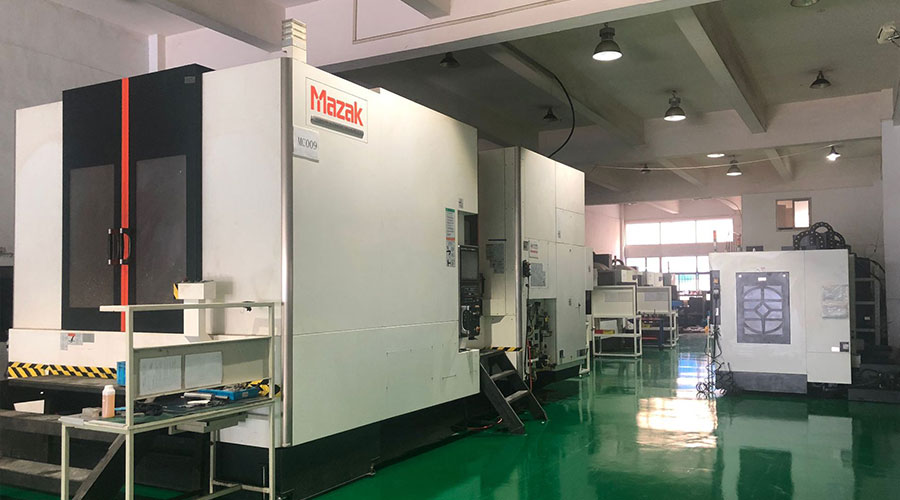 PTJ® provides a full range of Custom Precision cnc machining china services.ISO 9001:2015 &AS-9100 certified.
PTJ® provides a full range of Custom Precision cnc machining china services.ISO 9001:2015 &AS-9100 certified.
Machining shop specializing in fabrication services for construction and transportation industries. Capabilities include plasma and oxy-fuel cutting, Tailored machining, MIG and Custom Aluminum Cnc Precision Milling Welding Jig Fixture, roll forming, assembly, Lathe machining stainless steel cnc machine shaft, shearing, and CNC Swiss Machining services. Materials handled include carbon and Passivation Stainless Steel Machining Cover Plate Parts.
Tell us a little about your project’s budget and expected delivery time. We will strategize with you to provide the most cost-effective services to help you reach your target,You are welcome to contact us directly ( [email protected] ) .
Link to this article:Using gel balls as the material for stone polishing, it can be polished very well without pollution!
Reprint Statement: If there are no special instructions, all articles on this site are original. Please indicate the source for reprinting:Tungusten,Thanks!^^

